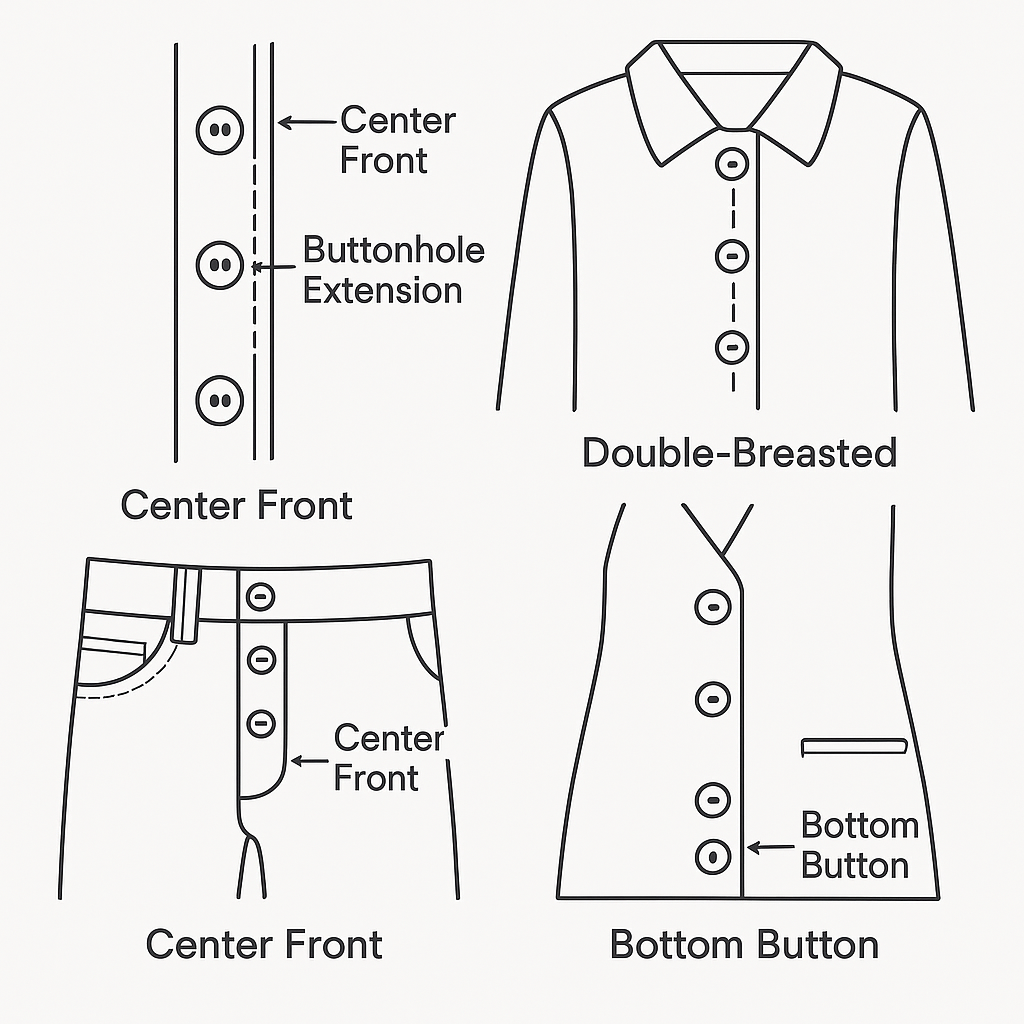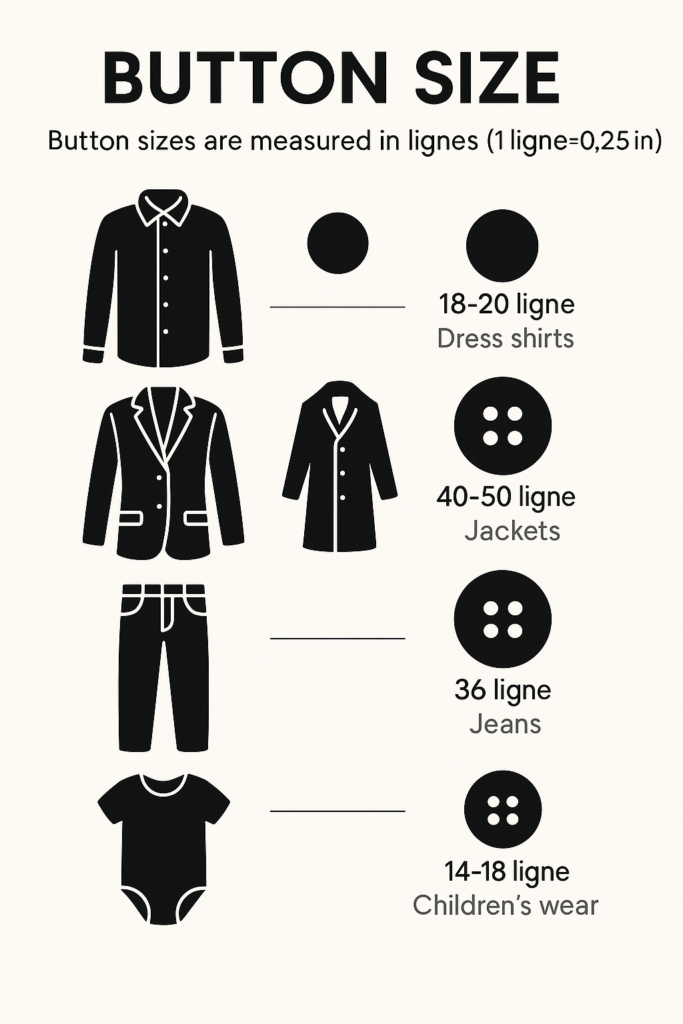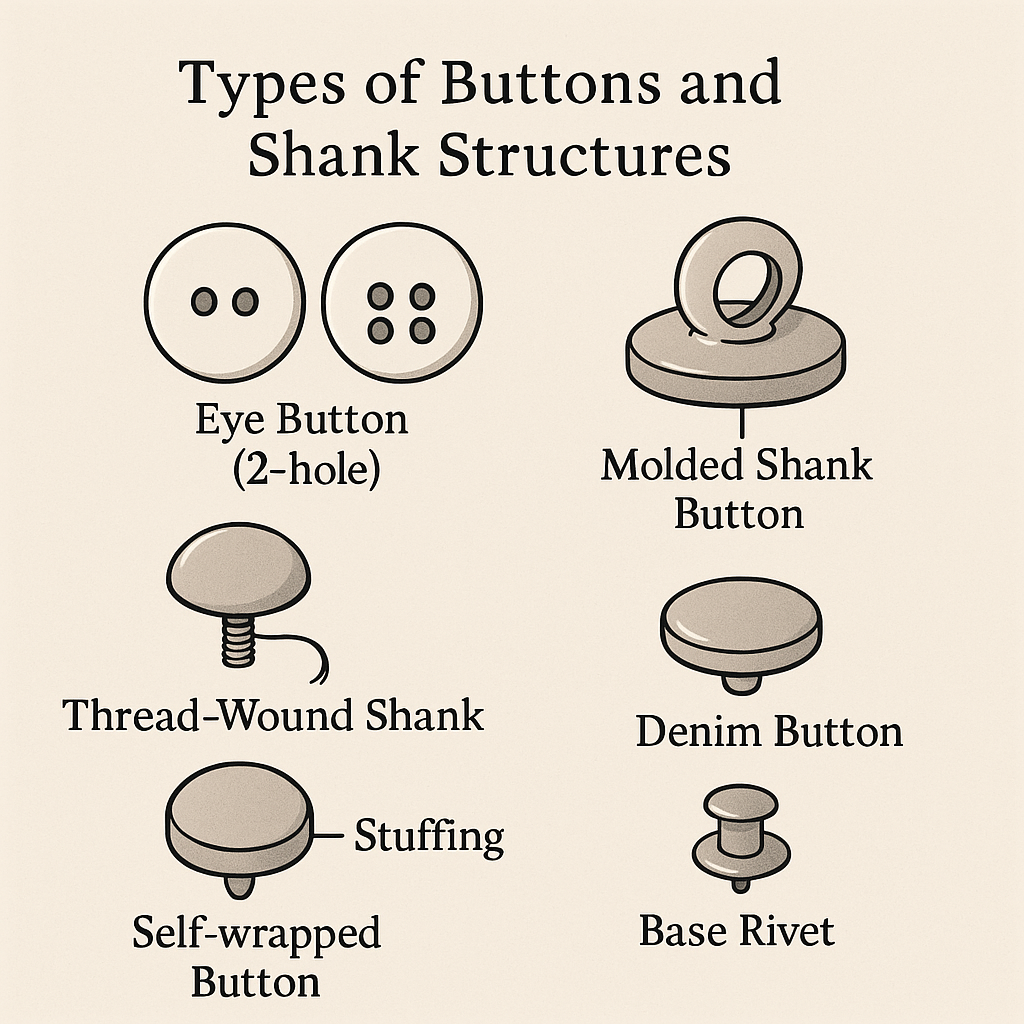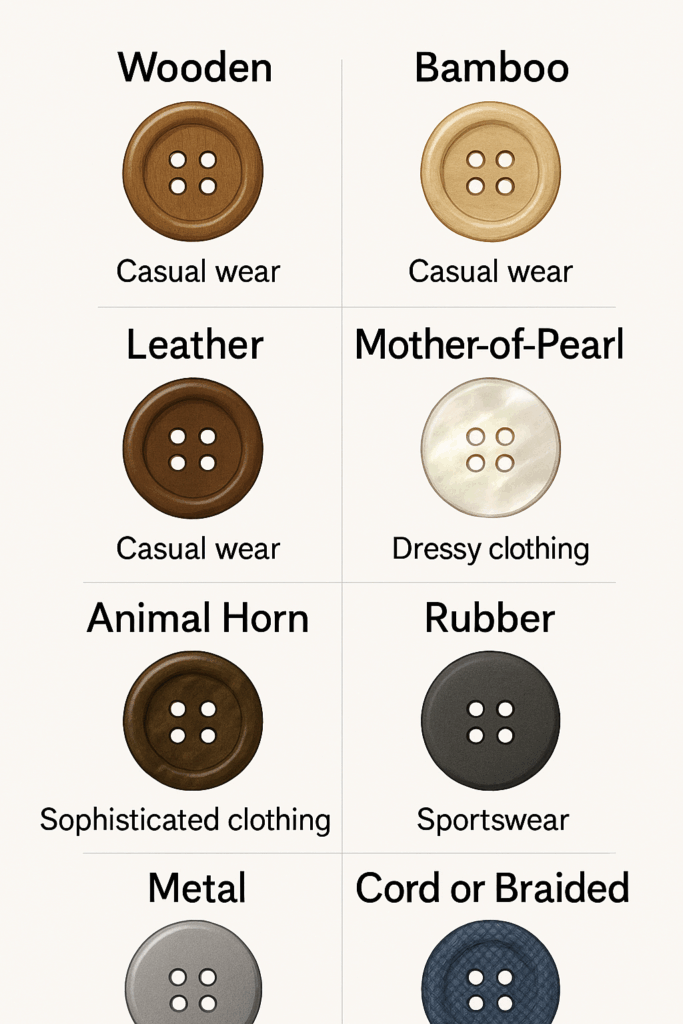📍 Button Positioning in Garment Design: Placement Rules and Style Techniques
Button positioning plays a crucial role in both the functionality and visual balance of a garment. Whether you’re designing a formal shirt, outerwear, or custom-made jacket, the alignment and placement of buttons affect wearability, structure, and aesthetic appeal.
This article explores the rules and variations of button placement across different garment types, with guidance on plackets, center lines, stress zones, and designer adjustments.
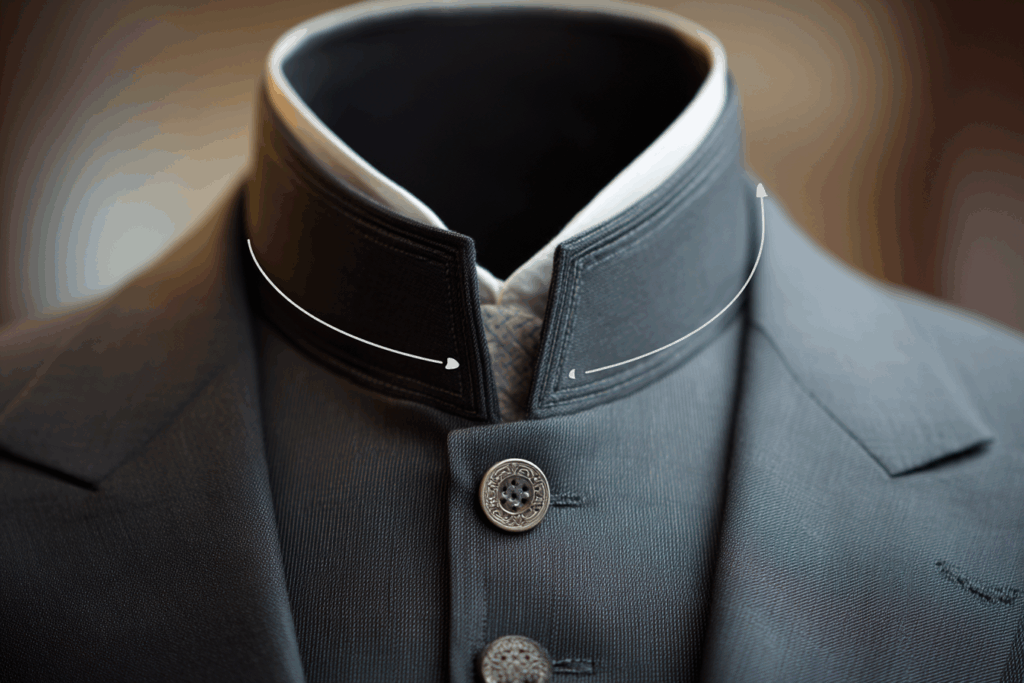
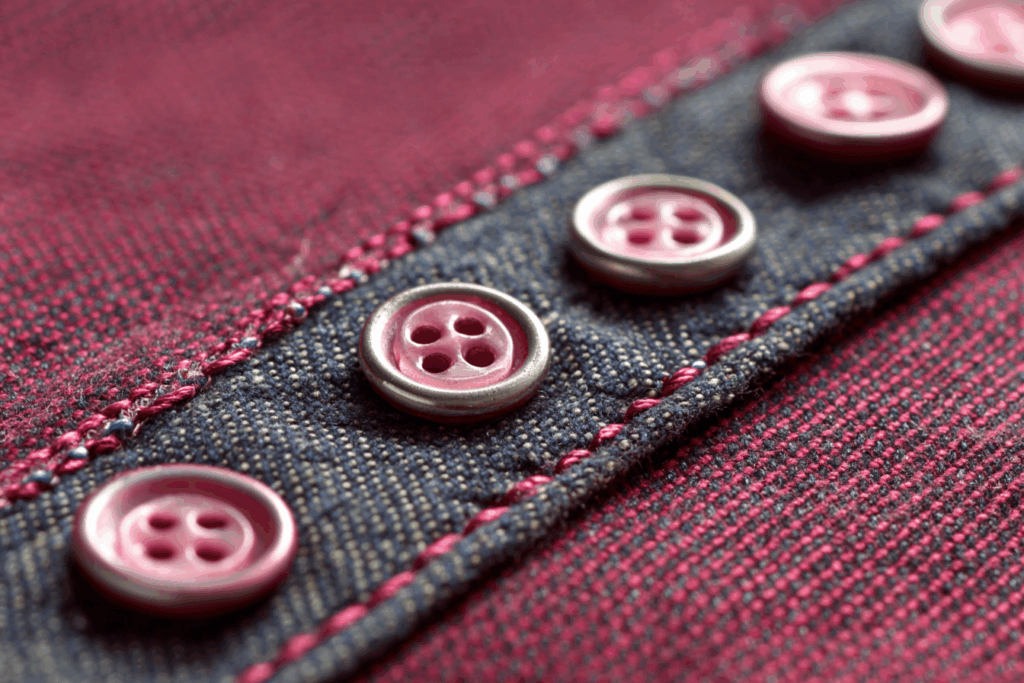
🔹 What Is a Placket?
- Placket: The part of a garment where buttons are sewn
- Front placket: The area with buttonholes
- Back placket: Typically used on dresses or shirts with back closures
🧵 The placket stabilizes and reinforces the fabric, making it suitable for repeated use and wear.
🔸 Gender-Specific Button Placement
| Gender | Button Side | Common Garments |
|---|---|---|
| Men | Right side | Shirts, jackets |
| Women | Left side | Blouses, dresses |
This traditional button placement is often referred to as:
- Men: Left placket over right (button on right)
- Women: Right placket over left (button on left)
✅ Still widely followed in formalwear, uniforms, and tailored designs.
🔹 Standard Button Placement Rules
➤ Center Front Line
For most garments:
- Buttons are sewn along the center front line
- Buttonholes are 1/8 inch from the edge of the placket
- Spacing is based on button size and garment design
➤ Jeans Exception
- The edge of the placket is considered the center front
- Buttons are placed on the bottom side of the placket for reinforcement
➤ Top Button Rule
- Should sit half a button’s diameter from the neckline or top edge
🔸 Buttonhole Extension & Spacing
- The buttonhole extension is the distance from the center front to the garment edge
- Larger buttons = wider extension and wider spacing
- Spacing between buttons should balance weight and garment structure
📏 Button spacing is usually equal to the diameter of the button.
🔸 Double-Breasted Styles
Double-breasted garments follow special rules:
- Two rows of buttons
- Spacing between rows = distance from row to center front
- Usually, only one row has functioning buttonholes
➕ Hidden Inner Button:
- Supports the structure underneath
- Often small and made of plastic
- Used in coats, suits, and leather garments
🔹 Buttons & Stress Zones
Buttons should avoid high-tension areas:
- 🔄 Horizontal stress appears at the chest line and waist
- Place buttons slightly below the chest line to prevent pulling
- For belted coats, buttons are placed above or below the belt line for a better look
🔸 Spare Buttons: A Sign of Quality
- High-end garments include extra buttons
- Placement:
- Sewn inside the seam or hem
- Placed in a plastic bag and attached to the label
- Especially important for:
- Custom buttons
- Expensive fabrics
- Formalwear
🧵 Tip: Always save spare buttons for each model to avoid full replacement.
✅ Best Practices Summary
| Design Element | Button Placement Rule |
|---|---|
| Top Button | 0.5× button diameter from garment edge |
| Buttonhole Edge | 1/8 inch from center front |
| Button Spacing | Equal to button diameter |
| Double-Breasted Style | One row active + inner hidden button support |
| Chest Line | Button placed slightly below for tension |
| Belted Coat | Place button above or below belt for symmetry |
